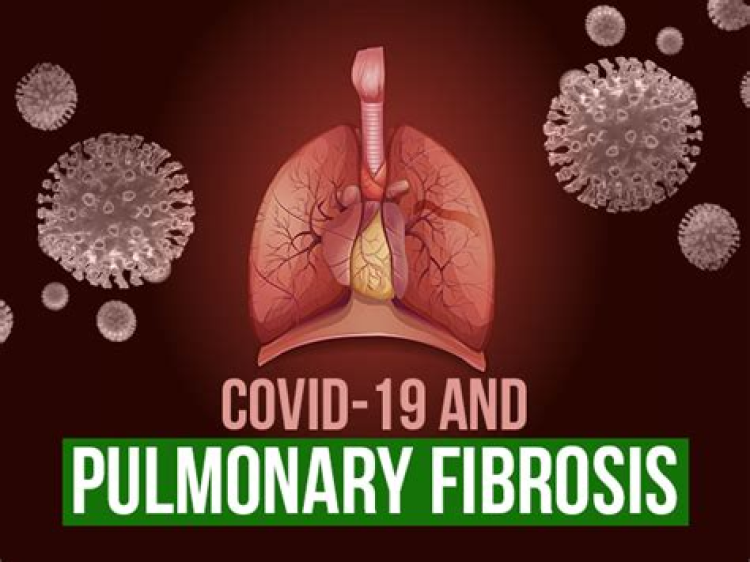- Authors: Jia-Ni Zou , Liu Sun , Bin-Ru Wang , You Zou , Shan Xu, Yong-Jun Ding, Li-Jun Shen, Wen-Cai Huang, Xiao-Jing Jiang, Shi-Ming Chen

- Published: March 23, 2021 https://doi.org/10.1371/journal.pone.0248957
Abstract
The characteristics and evolution of pulmonary fibrosis in patients with coronavirus disease 2019 (COVID-19) have not been adequately studied. AI-assisted chest high-resolution computed tomography (HRCT) was used to investigate the proportion of COVID-19 patients with pulmonary fibrosis, the relationship between the degree of fibrosis and the clinical classification of COVID-19, the characteristics of and risk factors for pulmonary fibrosis, and the evolution of pulmonary fibrosis after discharge. The incidence of pulmonary fibrosis in patients with severe or critical COVID-19 was significantly higher than that in patients with moderate COVID-19. There were significant differences in the degree of pulmonary inflammation and the extent of the affected area among patients with mild, moderate and severe pulmonary fibrosis. The IL-6 level in the acute stage and albumin level were independent risk factors for pulmonary fibrosis. Ground-glass opacities, linear opacities, interlobular septal thickening, reticulation, honeycombing, bronchiectasis and the extent of the affected area were significantly improved 30, 60 and 90 days after discharge compared with at discharge. The more severe the clinical classification of COVID-19, the more severe the residual pulmonary fibrosis was; however, in most patients, pulmonary fibrosis was improved or even resolved within 90 days after discharge.
Introduction
Pulmonary fibrosis can occur as a serious complication of viral pneumonia, which often leads to dyspnea and impaired lung function. It significantly affects quality of life and is associated with increased mortality in severe cases [1, 2]. Patients with confirmed severe acute respiratory syndrome coronavirus (SARS‐CoV) or Middle East respiratory syndrome coronavirus (MERS‐CoV) infections were found to have different degrees of pulmonary fibrosis after hospital discharge, and some still had residual pulmonary fibrosis and impaired lung function two years later. In addition, wheezing and dyspnea have also been reported in critically ill patients [3–5].
Severe acute respiratory syndrome coronavirus 2 (SARS-CoV-2) is a novel Betacoronavirus that is responsible for an outbreak of acute respiratory illness known as coronavirus disease 2019 (COVID-19). SARS-CoV-2 shares 85% of its genome with the bat coronavirus bat-SL-CoVZC45 [6]. However, there are still some considerable differences between SARS-CoV-2 and SARS‐CoV or MERS‐CoV. Whether COVID-19 can trigger irreversible pulmonary fibrosis deserves more investigation. George reported that COVID-19 was associated with extensive respiratory deterioration, especially acute respiratory distress syndrome (ARDS), which suggested that there could be substantial fibrotic consequences of infection with SARS-CoV-2 [7]. Moreover, it has also been shown that the pathological manifestations of COVID-19 strongly resemble those of SARS and MERS [8], with pulmonary carnification and pulmonary fibrosis in the late stages.
Chest X-rays and high-resolution computed tomography (HRCT) of the chest play important auxiliary roles in the diagnosis and management of patients with suspected cases of COVID-19 [9, 10]. The newly applied artificial intelligence (AI)-assisted pneumonia diagnosis system has been described as an objective tool that can be used to qualitatively and quantitatively assess the progression of pulmonary inflammation [11]. At present, although COVID-19 has been classified as a global epidemic for months, the risk factors for and severity and evolution of pulmonary fibrosis have not yet been reported. In this study, this new technology was applied to investigate the pulmonary imaging characteristics and related risk factors in COVID-19 patients at the time of hospital discharge, as well as the evolution of pulmonary fibrosis 30, 60 and 90 days after discharge, with the aim of providing an important basis for the clinical diagnosis, treatment and prognostic prediction of COVID-19-related pulmonary fibrosis.
For More Information: https://journals.plos.org/plosone/article?id=10.1371/journal.pone.0248957
